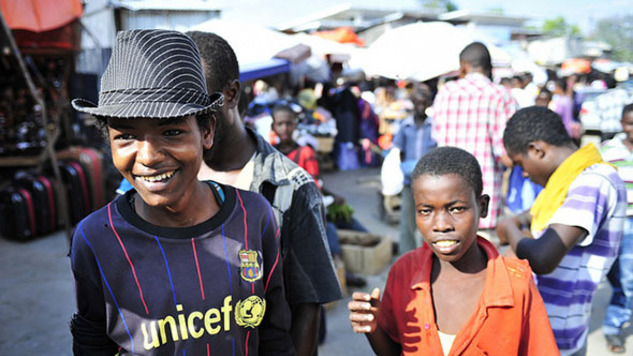Somalia’s debt is 93% of its GDP, and 15 other things you didn’t know about its cash situation

“The IMF’s first look at the country’s economy in over 25 years brought up some surprising numbers, and showed big progress.’
The last International Monetary Fund (IMF) mission to Somalia was sighted in November 1989, when it tackled a contraction in growth rate of -1.5%.
This time round the report card has been quite encouraging, with 3.7% growth returned last year, with a slight dip to 2.7% projected for this year. It is a story of huge progress, and could be even better: if the security situation improves (the assessment could only be done from neighbouring Kenya) and the country aso avoids drought, the IMF thinks this growth could rise to 5% before the decade is out.
Mail & Guardian Africa looked at the IMF’s detailed report released this past week for more pointers to the direction of Somalia’s economy:
1: While Somalia was welcomed back into the IMF fold on April 12, 2013, it remains ineligible for financial assistance, because it owes too much. It has an external debt of $5.3 billion, or 93% of its GDP, the bulk being arrears to the Paris Club creditors ($2.3 billion), non-Paris Club creditors ($1.5 billion), and multilateral institutions ($1.5 billion). The IMF says this debt simply has to be cleared first, however long it takes.
2: With internal tax revenue hurt by the government’s inability to collect on insecurity and non-compliance concerns, making a budget has been a tough ask. The 2015 budget is headed for a shortfall, building on the pattern in the first two post-conflict budgets. Salaries and wages account for 45% of expenditure—the highest in Africa, while the biggest sources of revenue remain foreign grants and trade taxes. Donors fund all capital spending.
3: Highlighting how dependent it is on remittances, the country has nine licensed money transfer firms, more than banks, with the formal financial sector composed of the central bank and six banks with provisional licences. Another 13 money transfer firms have applied for licences. The large informal sector remains out of sight.
4: The economy is predominantly dollarised (95% of currency), and cash is scarce, especially the lower denominations. Even Somali banknotes are not available, creating problems especially for the poorest. This, together with the fact that most remittances are taking place outside the international banking system, means the central bank is unable to conduct any monetary policy, and can only conduct surveys as it builds up the required muscle.
5: Despite growing political pressure, the IMF is urging the country’s central bank to hold back on currency reform, essentially the issuing of either a new currency or new banknotes, saying this would hurt credibility if it were done too fast. It is seemingly inevitable though: some 95% of Somali banknotes (only the 1,000 shilling denomination exists, worth about five US cents) in circulation are counterfeit, some printed abroad, others by local businesses. The fakes are easily identified, and are all accepted.
6: The country’s assets amount to just $57.3 million, mainly gold, foreign exchange assets and property and equipment. As the currency’s value is unknown, it thus cannot be counted.
7: While Somalia’s export sector is stirring, with livestock exports regularly sent to countries of the Gulf Cooperation Council (Saudi Arabia, Qatar, UAE, Oman, Bahrain, Kuwait), imports continue to take their toll, the majority of which are foodstuffs. The trade deficit was a significant $2.63 billion in 2014, or over ten times its 2015 budget.
8: The much-vaunted remittances stood at $1.3 billion last year, and together with other transfers of $1.1 billion, such as foreign aid, helped trim the income deficit to $450 million. However, such transfers are now increasingly outside the international banking system, as lenders reduce their risk exposure over concerns of money laundering and financing of terrorism.
9: The deficit was also party financed by growing Foreign Direct Investment (FDI) of $434 million, mainly in electricity, telecommunications and hotels, with investors, many in hydrocarbons, held back largely only by the uncertain security situation.
10: Somalia is looking at a prospective natural resource boom, specifically hydrocarbons, as early seismic surveys prove promising. With fears such a windfall could overwhelm the weak financial and political system, the IMF has identified this as an urgent area to prepare the country in.
11: Having already seen major brain drain due to the conflict, high turnover in the economic team helping right the ship has also been a challenge: In just under two years there have been three ministers of finance, and three governors of the central bank. Attraction of highly qualified diaspora staff remains difficult, and the focus has been on training within, from scratch.
12: Complex clan politics persist: having a non-clan character is now a requirement for a banking licence, while identity politics regularly permeate top financial policy making. The country last week admitted it would not hold a full election next year, and may have to again turn to clan elders to pick government.
13: Somalia’s economy is especially at risk from exogenous factors: Slower global growth and unrest in the Middle East could harm its export markets, reduce aid and donor support, hit the crucial life-blood of remittances, or lead to an influx of refugees, as the Yemen conflict has shown.
14: The rapid growth in the economy between 2012-13 was attributed to the recovery of livestock and fisheries (Somalia has mainland Africa’s longest coastline), but also due to a very active private sector activity in communications, money transfer and construction, mainly associated with the return of diaspora Somalis.
15: The opaque awarding of contracts, and of exploration concessions, has posed a challenge, but there is now a high-powered team chaired by the minister of finance and composed of local and external representatives in place, and which is looking to seal loopholes. Deals of $5 million and more must for example all be scrutinised by the team.
Mail & Guardian Africa